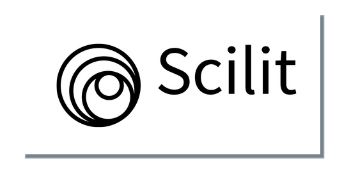Ambulatory Blood Pressure Monitoring (ABPM): Procedure, Interpretation and Clinical Use
DOI:
https://doi.org/10.11594/jk-risk.02.3.4Keywords:
ambulatory blood pressure monitoring, masked hypertension, white coat hypertension, hypertentionAbstract
Mengingat peran penting hipertensi sebagai salah satu penyebab utama morbiditas dan mortalitas prematur global, maka untuk diagnosis dan tatalaksana hipertensi secara tepat, hal yang sangat penting adalah melakukan pengukuran tekanan darah (TD) yang tepat. Secara historis, diagnosis, tatalaksana, dan prediksi risiko kematian pada pasien hipertensi didasarkan pada pembacaan TD di klinik. Namun, pembacaan TD di klinik terbukti tidak selalu dapat mencerminkan TD pasien yang sebenarnya. Dilain pihak, telah banyak bukti yang menunjukkan bahwa ambulatory blood pressure monitoring (ABPM) adalah prediktor yang lebih baik untuk kejadian kardiovaskular utama dibandingkan pengukuran TD di klinik. ABPM mengurangi jumlah pembacaan yang salah, bersamaan dengan manfaat tambahan untuk memahami variabilitas dinamis TD. ABPM memungkinkan pencatatan pengukuran TD setiap 15 – 30 menit dalam 24 jam dan mengevaluasi berbagai parameter seperti TD rata-rata 24 jam, TD rata-rata siang hari, TD rata-rata malam hari, dan persentase penurunan TD pada malam hari. Tulisan ini fokus pada pentingnya ABPM, kelebihan dan keterbatasannya dibandingkan dengan pengukuran TD klinik standar serta prosedur dan interpretasinya dalam mendiagnosis dan melakukan tatalaksana hipertensi secara lebih tepat
Downloads
References
Nobre F and Mion Junior D. Ambulatory Blood Pressure Monitoring: Five Decades of More Light and Less Shadows. Arq Bras Cardiol. 2016; 106(6):528-537.
Pierin AM, Souza V, Lima JC, Mano GM, Ortega K, Ignês EC, et al. White coat effect and white coat hypertension and office blood pressure measurement taken by patients, nurses, and doctors compared with ambulatory blood pressure monitoring. J Hypertens. 2002;20(4 Suppl):S975–S975.
Myers MG, Godwin M, Dawes M, Kiss A, Tobe SW, Kaczorowski J. Measurement of blood pressure in the office: recognizing the problem and proposing the solution. Hypertension. 2010;55(2):195–200.
Hodgkinson J, Mant J, Martin U, et al. Relative effectiveness of clinic and home blood pressure monitoring compared with ambulatory blood pressure monitoring in diagnosis of hypertension: systematic review. BMJ. 2011;342: d3621.
Kario K, Hoshide S, Chia YC, et al. Guidance on ambulatory blood pressure monitoring: A statement from the HOPE Asia Network. J Clin Hypertens. 2021; 23:411–421.
Sociedade Brasileira de Cardiologia. V Diretriz de monitorização ambulatorial da pressão arterial e III Diretriz de monitorização residencial da pressão arterial. V MAPA / III MRPA. Arq Bras Cardiol. 2011;97(3 supl 3):1-24.
Babbs CF. Oscillometric measurement of systolic and diastolic blood pressures validated in a physiologic mathematical model. Biomed Eng Online, 11 (2012 Aug 22), p. 56
Dadlani A, Madan K, Sawhney JPS. Ambulatory blood pressure monitoring in clinical practice. Indian Heart Journal 71 (2019) 91e97.
Ogedegbe G, Pickering T. Principles and techniques of blood pressure measurement. Cardiol Clin, 28 (4) (2010 Nov), pp. 571-586
Mancia G, Fagard R, Narkiewicz K, et al, for the Task Force for the Management of Arterial Hypertension of the European Society of Hypertension (ESH) and of the European Society of Cardiology (ESC). 2013 ESH/ESC guidelines for the management of arterial hypertension. J Hypertens 2013.
National Heart Foundation and High Blood Pressure Research Council of Australia Ambulatory Blood Pressure Monitoring Consensus Committee. Ambulatory blood pressure monitoring. Australian Family Physician 2011;40(11):877-880.
Whelton PK, Carey RM, Aronow WS, et al. 2017 ACC/AHA/AAPA/ABC/ACPM/ AGS/APHA/ASH/ASPC/NMA/PCNA guideline for the prevention, detection, evaluation, and management of high blood pressure in adults: executive summary: a report of the American College of cardiology/American heart association task force on clinical practice guidelines. Hypertension, 71 (6) (2018 Jun 1), pp. 1269-1324
Katalin M, Corina U, Zsuzsanna J. Ambulatory Blood Pressure Monitoring – Clinical Practice Recommendations. Acta Medica Marisiensis 2016;62(3):350-355.
Di Raimondo D, Musiari G. & Pinto A. Nocturnal blood pressure patterns and cardiac damage: there is still much to learn. Hypertens Res 43, 246–248 (2020).
Marchiando RJ, Elston MP. Automated ambulatory blood pressure monitoring: Clinical utility in the family practice setting. Am Fam Phys 2003; 67:2343-50,2353-2354.
Iimuro S, Imai E, Watanabe T, et al. Hyperbaric area index calculated from ABPM elucidates the condition of CKD patients: the CKD-JAC study. Clin Exp Nephrol, 19 (1) (2015), pp. 114-124
Flynn JT, Daniels SR, Hayman LL, et al. Update: ambulatory blood pressure monitoring in children and Adolescents: a scientific statement from the American heart association. Hypertension, 63 (5) (2014 May 1), pp. 1116-1135
Parati G, Stergiou G, O'Brien E, et al. European Society of Hypertension practice guidelines for ambulatory blood pressure monitoring. J Hypertens, 32 (7) (2014 Jul), pp. 1359-1366
Tocci G, Presta V, Figliuzzi I, et al. Prevalence and clinical outcomes of white-coat and masked hypertension: analysis of a large ambulatory blood pressure database. J Clin Hypertens Greenwich Conn, 20 (2) (2018 Feb), pp. 297-305
Lovibond K, Jowett S, Barton P, et al. Cost-effectiveness of options for the diagnosis of high blood pressure in primary care: a modelling study. Lancet Lond Engl, 378 (9798) (2011 Oct 1), pp. 1219-1230
Turner JR, Viera AJ, Shimbo D. Ambulatory blood pressure monitoring in clinical practice: a review Am J Med, 128 (1) (2015 Jan), pp. 14-20
Palla M, Saber H, Konda S, Briasoulis A. Masked hypertension and cardiovascular outcomes: an updated systematic review and meta-analysis. Integrated Blood Pres Contr, 11 (2018), p. 11
de la Sierra A, Gorostidi M, Banegas JR et al. Nocturnal hypertension or nondipping: which is better associated with the cardiovascular risk profile? Am J Hypertens, 27 (5) (2014 May), pp. 680-687
Oliveras A, Armario P, Martell-Clarós N, et al. Spanish Society of Hypertension-Resistant Hypertension Registry. Urinary albumin excretion is associated with nocturnal systolic blood pressure in resistant hypertensives. Hypertens Dallas Tex 1979, 57 (3) (2011 Mar), pp. 556-560
Kario K. Nocturnal hypertension: new Technology and evidence. Hypertension, 71 (6) (2018 Jun 1), pp. 997-1009
Boggia J, Li Y, Thijs L, et al. Prognostic accuracy of day versus night ambulatory blood pressure: a cohort study. Lancet Lond Engl, 370 (9594) (2007 Oct 6), pp. 1219-1229
O'Brien E, Dolan E. Ambulatory blood pressure monitoring for the effective management of antihypertensive drug treatment. Clin Ther, 38 (10) (2016 Oct), pp. 2142-2151
Divisón-Garrote JA, Ruilope LM, de la Sierra A, et al. Magnitude of hypotension based on office and ambulatory blood pressure monitoring: results from a cohort of 5066 treated hypertensive patients Aged 80 Years and older. J Am Med Dir Assoc, 18 (5) (2017 May 1), pp. 452.e1-452.e6
Alquadan KF, Singhania G, Koratala A, Ejaz AA. Office Orthostatic Blood Pressure Measurements and Ambulatory Blood Pressure Monitoring in the Prediction of Autonomic Dysfunction. Clin Hypertens [Internet], vol. 23 (2017 Mar 15) [cited 2018 Jul 17]. Available from:https://www.ncbi.nlm.nih.gov/pmc/articles/PMC5351249/
Torres G, Sánchez-de-la-Torre M, Martínez-Alonso M, et al. Use of ambulatory blood pressure monitoring for the screening of obstructive sleep apnea. J Clin Hypertens Greenwich Conn, 17 (10) (2015 Oct), pp. 802-809
Downloads
Published
Issue
Section
License
Authors who publish with this journal agree to the following terms:
- Authors retain copyright and grant the journal the right of first publication with the work simultaneously licensed under a Creative Commons Attribution License that allows others to share the work with an acknowledgement of the work's authorship and initial publication in this journal.
- Authors can enter into separate, additional contractual arrangements for the non-exclusive distribution of the journal's published version of the work (e.g., post it to an institutional repository or publish it in a book), with an acknowledgement of its initial publication in this journal.
- Authors are permitted and encouraged to post their work online (e.g., in institutional repositories or on their website) before and during the submission process, as it can lead to productive exchanges and earlier and greater citation of published work (See The Effect of Open Access).
















